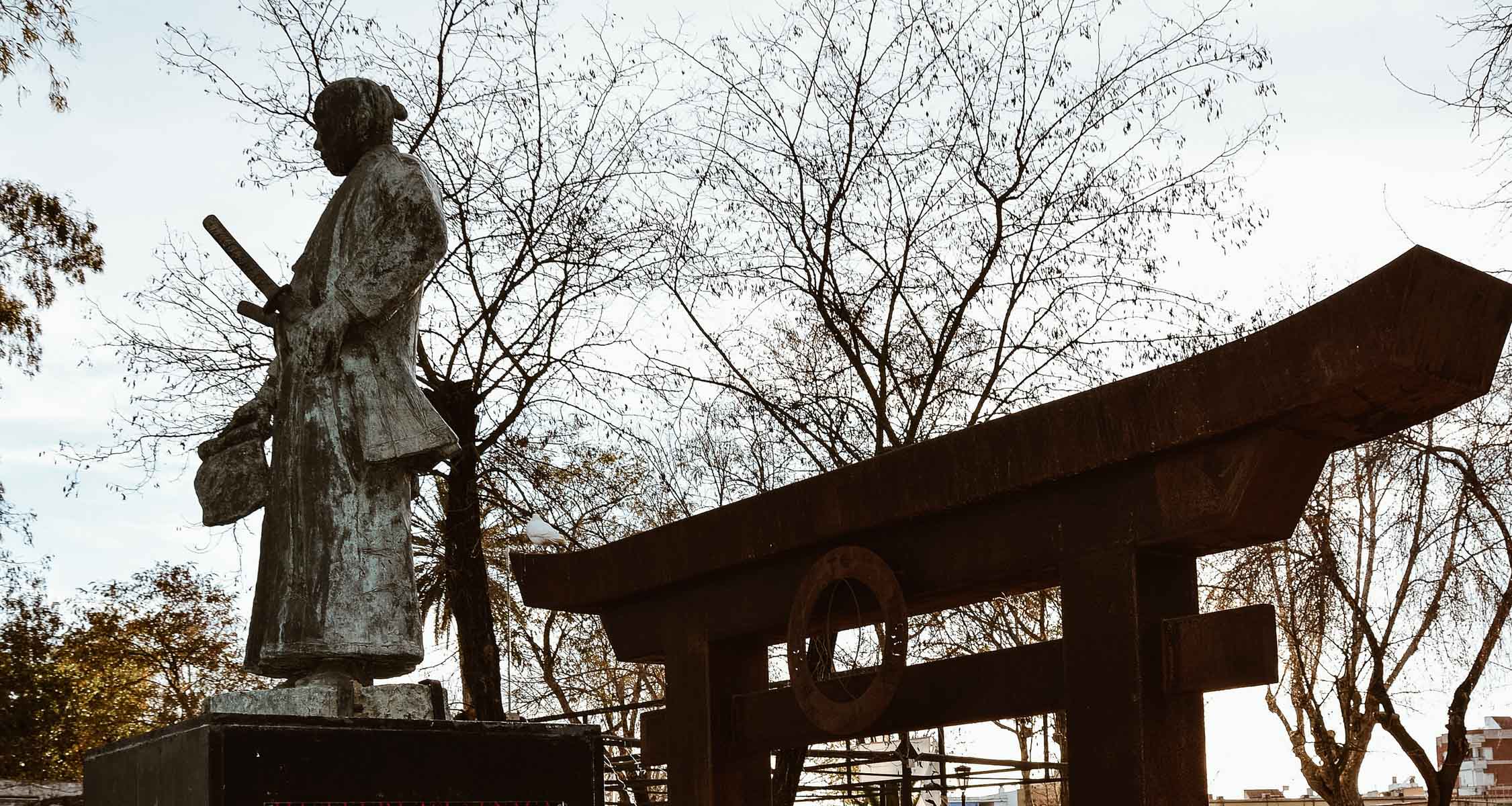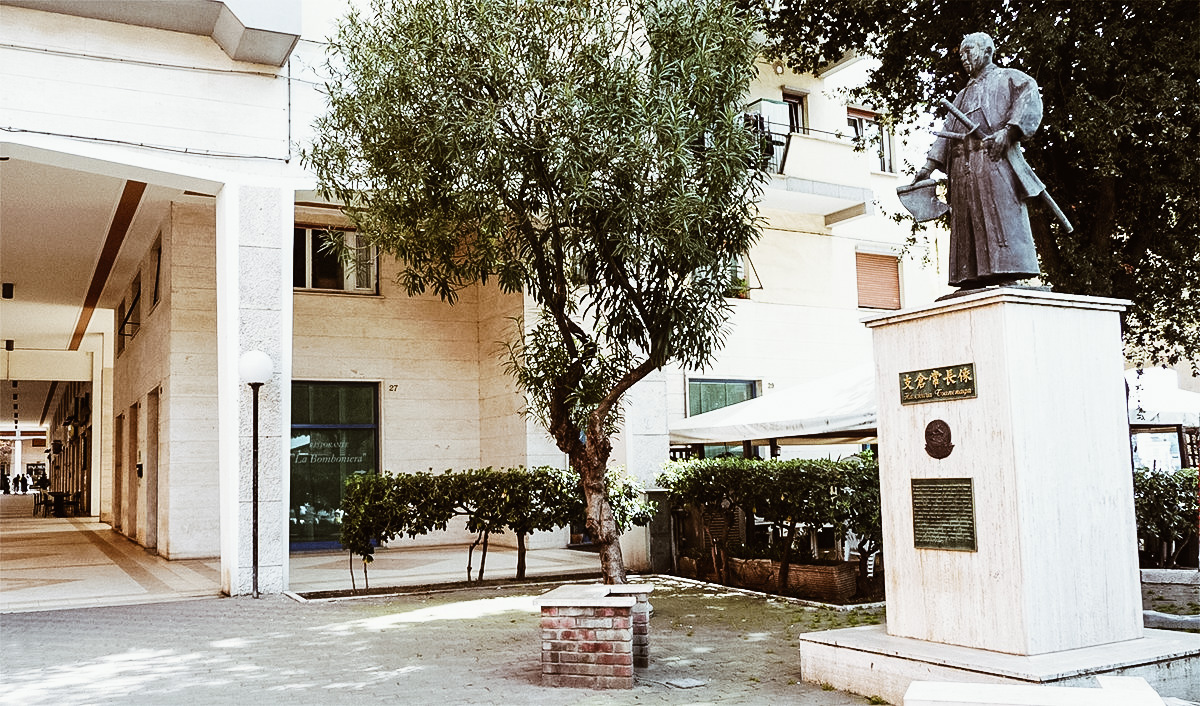Japan History: Hasekura Tsunenaga

photo credits: wikimedia.org
Tsunenaga Rokuemon Hasekura (1571 – 7 August 1622) was a Japanese samurai and servant of Date Masamune, the daimyo of Sendai, famous for having led numerous delegations of ambassadors that led him to travel the whole world.
He led a delegation of ambassadors in Mexico and later in Europe between 1613 and 1620, after which he returned to Japan. He was the first Japanese officer sent to America and the first to establish relations between France and Japan.
The Spaniards began their travels between Mexico (“New Spain”) and China, through their territorial base in the Philippines, following the journeys of Andrés de Urdaneta in the sixteenth century. Manila became their definitive base for the Asian region in 1571.
Contacts with Japan began due to the continuous shipwrecks on the Japanese coast, at which point the Spaniards began to hope to expand the Christian faith in Japan. The attempts to expand their influence in Japan met strong resistance from the Jesuits, who had begun the evangelization of the country in 1549, as well as the Portuguese and the Dutch who did not wish to see Spain trade with the Japanese.
In 1609 the Spanish galleon San Francisco shipwrecked on the Japanese coast at Chiba due to bad weather on its way from Manila to Acapulco. The sailors were rescued, and the captain of the ship, Rodrigo de Vivero y Aberrucia, met Tokugawa Ieyasu.
A treaty under which the Spaniards could build an industry in the east of Japan was signed on November 29 1609, so that Spanish ships would be allowed to visit Japan if necessary.
The embassy project
Luis Sotelo, a Franciscan friar who was proselytizing in the Tokyo area, persuaded the Shōgun to send him as ambassador to Nueva España (Mexico). In 1610 he sailed to Mexico with the Spanish and 22 Japanese sailors aboard the San Buena Ventura, a ship built by the Englishman William Adams for the Shogun. Once in New Spain, Luis Sotelo met the Viceroy Luis de Velasco, who agreed to send an ambassador to Japan, in the person of the famous explorer Sebastián Vizcaíno, with the mission to explore the “Gold and Silver Islands” that were thought to be east of the Japanese islands.
Vizcaíno arrived in Japan in 1611 and had many meetings with the Shogun and the feudal lords, but he was not very respectful of Japanese customs, and he found the Japanese to be against Catholic proselytism. Vizcaíno eventually set off in search of the “Silver Island”, during which he encountered bad weather, which forced him to return to Japan with serious damage. The Shogun decided to build a galleon in Japan, in order to bring Vizcaíno back to New Spain.

Statue of Hasekura Tsunenaga in Coria del Río
photo credits: tradurreilgiappone.com
Date Masamune was head of the mission and Hasekura Tsunenaga was appointed one of his attendants. Date Maru was called by the Japanese to build the galleon and later he was joined by San Juan Bautista, called by the Spaniards. With the participation of technical experts from the Bakufu, 800 naval workers, 700 blacksmiths, and 3,000 carpenters it took 45 days to build the whole ship.
After its completion, the ship sailed on 28 October 1613 from Ishinomaki to Acapulco in Mexico, with about 180 crew members, including 10 Shogun samurai, 12 samurai from Sendai, 120 between merchants, sailors and Japanese servants.
The ship arrived in Acapulco on 25 January 1614 after three months of navigation, and a ceremony welcomed the delegation. Before the trip to Europe, the delegation spent time in Mexico, visiting Veracruz and then embarking on the fleet of Don Antonio Oquendo. The emissaries left for Europe on the San Jose on 10 June, and Hasekura had to leave most of the group of Asian merchants and sailors in Acapulco.
The fleet arrived in Sanlúcar de Barrameda on October 5, 1614.
The Japanese embassy met the Spanish king Philip III in Madrid on January 30, 1615. Hasekura handed over a letter from Date Masamune to the sovereign and the offer for a treaty. The king replied that he would do what was in his power to meet the demands.
On February 17, Hasekura was baptized by the king’s personal chaplain and renamed Felipe Francisco Hasekura.

Statue of Hasekura Tsunenaga in Civitavecchia
photo credits: tradurreilgiappone.com
France
After travelling through Spain, the delegation sailed into the Mediterranean Sea aboard three Spanish frigates to Italy. Because of the bad weather, the ships was forced to stay in the French bay of Saint Tropez, where they were received by the local nobility, with amazement from the population.
The visit of the Japanese people is recorded in the chronicles of the area as a delegation led by “Filippo Francesco Faxicura, Ambassador to the Pope, from Date Masamune, King of Woxu in Japan”.
Many picturesque details of their behaviour and appearance were remembered:
“They never touch the food with their hands, but they use two thin sticks holding three fingers”.
“They blow their noses in soft silky sheets of the size of a hand, which they never use twice, and then throw them on the ground after use, and were delighted to see that the people around them rushed to pick them up.”
“Their swords cut so well that they can cut a thin sheet of paper by resting it on the edge and blowing on it.”
(“Reports of Mme de St Tropez”, October 1615, Bibliothèque Inguimbertine, Carpentras).
The visit of Hasekura Tsunenaga to Saint Tropez in 1615 is the first documented example of relations between France and Japan.
Italy
The Japanese delegation arrived in Italy, succeeding in obtaining an audience with Pope Paul V in Rome, in November 1615, disembarking in the port of Civitavecchia, reason why even today Civitavecchia is twinned with the Japanese city of Ishinomaki. Hasekura handed the Pope a letter decorated with gold, with a formal request for a commercial treaty between Japan and Mexico, as well as sending Christian missionaries to Japan. The Pope accepted without delay to dispatch the sending of missionaries but left the decision of a commercial treaty to the King of Spain. The Pope then wrote a letter to Date Masamune, of which a copy is still preserved in the Vatican. The Senate of Rome gave Hasekura the honorary title of Roman Citizen, in a document which he later brought to Japan and which is still visible today and preserved in Sendai. In 1616, the French publisher Abraham Savgrain published an account of Hasekura’s visit to Rome: “Récit de l’entrée solemnelle et remarquable faite à Rome, par Dom Philippe Francois Faxicura” (“Tale of the solemn and remarkable entry made in Rome by Don Filippo Francesco Faxicura “).

Conferral of honorary Roman citizenship to “Hasekura Rokuemon”
photo credits: wikimedia.org
Second visit to Spain
For the second time in Spain, Hasekura met the king, who declined the offer of a commercial treaty, because he thought that the Japanese people did not seem an official delegation of the sovereign of Japan, Tokugawa Ieyasu. He, on the contrary, had promulgated an edict in January 1614 ordering the expulsion of all the missionaries from Japan and had begun the persecution of the Christian faith in the country. The delegation left Seville for Mexico in June 1616 after a two-year period in Europe. Some of the Japanese remained in Spain, more precisely in a village near Seville (Coria del Río), and their descendants still have the surname Japón.
Return to Japan
In April 1618 the San Juan Bautista arrived in the Philippines from Mexico, with Hasekura and Luis Sotelo on board. The ship was bought by the Spanish government, with the aim of building defences against the Dutch. Hasekura returned to Japan in August 1620 and found the nation very changed: the persecution of Christians in the effort to eradicate Christianity had been active since 1614, and Japan was moving towards the “Sakoku” period, characterized by overwhelming isolationism. Because of these persecutions, the trade agreements with Mexico that he had tried to establish were denied, and much of the effort in this direction had been in vain.
It seems that the embassy he represented has had few results, but has instead accelerated Shogun Tokugawa Hidetada’s decision to cancel trade relations with Spain in 1623 and diplomatic relations in 1624.
What happened to Hasekura after the diplomatic adventure is unknown, and the stories about his last years are numerous. Some argue that he abandoned Christianity, others said he defended his faith so deeply as to become a martyr, and others said he remained a Christian in intimacy, professing his faith in secret. Hasekura died in 1622, and his tomb is still visible today in the Buddhist temple of Enfukuji in the prefecture of Miyagi.
In 2015, was the 400th anniversary of the arrival of Keichō Kenō Shisetsudan, the first official delegation from Japan. A procession was held in historical costume in the main street of Civitavecchia for a historical re-enactment of the entrance to the city of the delegation led by a Hasekura Tsunenaga. In the evening, a concert was organized by local choral musicians at the Church of the Holy Japanese Martyrs. This event was also attended by Civitavecchia Mayor Antonio Cozzolino, Deputy Director of the Bureau of Reconstruction Policies of the city of Ishinomaki, Junichi Kondō, the Ambassador of Japan Kazuyoshi Umemoto and Consorte and citizens of both cities.

The delegation of Japan landing in Italy
photo credits: it.emb-japan.go.jp
Share this:
- Click to share on Facebook (Opens in new window)
- Click to share on Twitter (Opens in new window)
- Click to share on Tumblr (Opens in new window)
- Click to share on Pinterest (Opens in new window)
- Click to share on Telegram (Opens in new window)
- Click to share on WhatsApp (Opens in new window)
- Click to share on Reddit (Opens in new window)
- Click to print (Opens in new window)






